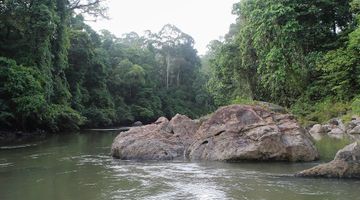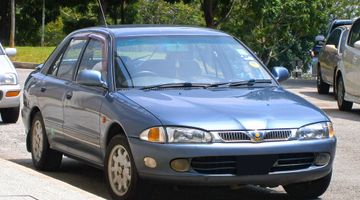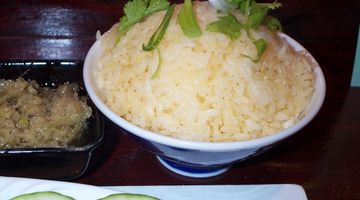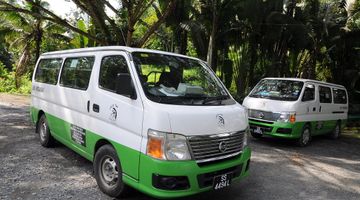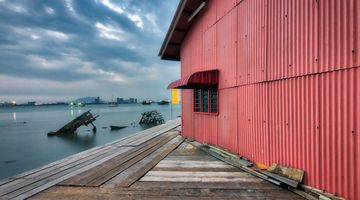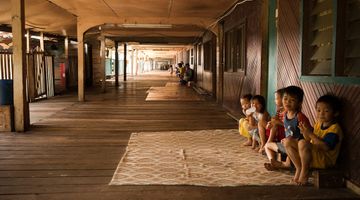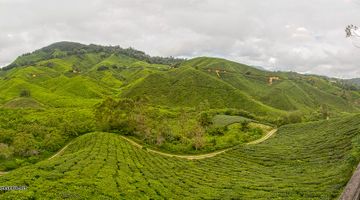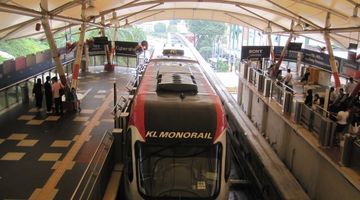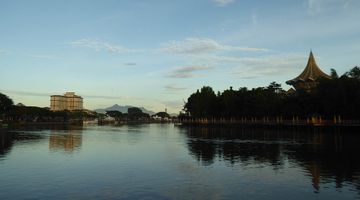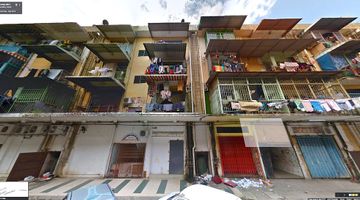Taman Negara National Park Travel Guide
In a nutshell
The lush, tropical foliage and exotic wildlife of the 130 million year old, Taman Negara National Park draws in travellers wanting authentic, natural and unique encounters in the oldest rainforest in the world.
Why go to Taman Negara National Park
Turn off your cell phone, slip on a pair of comfy shoes and connect with the park’s natural treasures. From cave exploration, to hiking, to swimming, to white-water rafting, to fishing, to jungle trekking; there are just so many reasons to visit Taman Negara and nature enthusiasts will have no shortage of entertainment.
The rainforests boast the world’s longest canopy walk at 510 meters long and 25 meters above the ground, which offers visitors an exquisite bird’s-eye view of this prehistoric piece of astounding land. For travellers who enjoy physical challenges and who are in top-notch psychical shape, climbing to the summit of the 2,187 meter Gunung Tahan will undoubtedly be right up your alley.
Aside from the native Orang Asli (Batek and Semokberi) villagers, Taman Negara is also home to a staggering array of plants and animals. There are night walking safaris as well as night 4WD Safaris which allow guests to get up close and personal with the nocturnal inhabitants of the park. From owls, leopards, cats, snakes and hornbills to glow-in-the-dark fungi, and flowers that only bloom in the moonlight, these night adventures are well worth the visit. The park is also the habitats for critically endangered wildlife, such as Sumatran rhinos and tigers. While sightings of these animals are extraordinarily rare, visitors can expect to spot wild elephants, Malayan tapirs, monkeys, giant squirrels and a variety of exotic feathered-friends during their visit.
When to go to Taman Negara National Park
The peak tourist season in Taman Negara National Park is from April to August but the best time to visit world be during dry season as this is breeding season for the majority of the park’s animals as well as when the weather is most ideal for trekking, walking and climbing. The dry season occurs from February until September.
Where to stay in Taman Negara
Aside from the one resort in the park itself, all accommodation options are across the Tembeling River in the sleepy, rural village of Kuala Tahan.
Fortunately there are several guesthouses, one resort and affordable hostels clustered throughout the town and booking ahead is not a prerequisite. There are amply spots top sleep for the night within walking distance of the river and there are boats that transport visitors across to the park entrance for a mere MYR 1 each way. Accommodation in Kuala Tahan is largely inexpensive and a simple fan-room can easily be found for MYR 20.
For those looking for accommodation that offers hides or perches from which to observe wildlife in their natural environments, Mutiara Taman Negara Resort has built their property in such a way that guests can observe various animals from the comfort and convenience of their verandas.
For travellers looking to take shelter in one of the jungle housings on an overnight trek, sleeping bags can be rented for about MYR 5 per night from a couple of places in town if you ask around.
Where to eat in Taman Negara
There are three primary eating options while you’re in Taman Negara; namely, the somewhat upmarket restaurant at Mutiara Taman Negara Resort, at one of the little raft restaurants floating on the river, or at one of the little eateries across from where the buses drop you off.
We feel that the floating restaurants offer the most affordable grub as well as the most memorable experience in terms of dining out. Getting across to the restaurants costs MYR 1 each way and in the time it takes you to fumble for the correct change, you’ll be delivered to the other side. The various floating restaurants offer similar food at similar prices, including fried rice, grilled chicken, fried noodles, curries, beef or fish in soy sauce as well as some Western-style dishes such as hamburgers, pancakes and fries. A meal, soft drink and your two-way boat journey should cost around MYR 15.
The village itself has a couple of small restaurants too and visitors should be on the lookout for local dishes such as nasi lemak (a popular Malaysian rice dish), kaya toast, nasi goreng (savory fried rice), soups and sirup bandung, a sweet, pink drink made from rose cordial syrup and evaporated or condensed milk.
While there are plenty of goodies to munch during your stay as well as loads of fruit juices and soft drinks, however, as a result of being a Muslim town, Kuala Tahan has no bars and the vast majority of eateries sell no alcohol of any kind. Although having said that, there is a resort a little way out of town called Rainforest Resort that sells beers and liquor at a pricy premium.
For those doing a bit of overnight trekking, you can easily stock up your backpacks with canned food and other dry snacks at one of the small convenience stores in town.
How to get around Taman Negara
Getting around Taman Negara National Park can be done with a guide as well as on your own.
Guides are not necessary as there as is plenty of information as well as maps available for visitors at the Park Headquarters just to the left of Mutiara Resort but as with all travels, locals are equipped with first-hand experience and know many secret spots unknown to newcomers.
Additionally, guides are strongly recommended for the overnight jungle treks or for those visitors wanting to do very deep jungle treks such as the Keniam, Tenol or the Tahan Mountain paths.
The Park Headquarters is also the spot to purchases entry permits as well as upon arrival with admission being charged a very reasonable MYR 1, a camera permit MYR 5 and a fishing permit at MYR10 for the entire duration of your visit. As already mentioned, another means of exploring the park, other than on foot, is by crossing the river on one of the cheap and cheerful MYR 1 boat rides.
How to get to and from Taman Negara
As a result of Jungle Railway being damaged by heavy rainfall three years ago and the railway line between Kemubu and Gua Musang being closed permanently, most travellers opt to arrive at Kuala Tahan National Park via bus as it is definitely the easiest means of entry.
It is also possible to arrive by means of a car, taxi and even a boat during wet season.
From Kuala Lumpur & Penang to Jerantut
Most travellers travel access the park via the closest town, Jerantut which is linked to Kuala Lumpur as well as additional regional destinations via bus. From Jeruntut travellers can decide between hopping in a minivan headed directly to Kuala Tahan, or they can choose to catch a bus to Kuala Tembeling and get a bus from there to Kuala Tahan.
SK Ekspress buses run from the Pekeliling Bus Station at Titiwangsa in Kuala Lumpur straight to Jerantut and cost around MYR 35. The journey takes around 3 and a half hours and departs at 8.30am, 10.30am and 5.30pm.
Getting to Jerantut from Penang is possible on the Kuala Tahan Express bus which leaves Butterworth Bus Station at 11:30pm on a direct overnight bus route. The trip duration is around ten hours and costs around MYR 43.
From Jerantut to Kuala Tahan
Upon arrival in Jerantut, travellers can decide on three different means of arrival in Kuala Tahan; private minivan, public bus or boat.
For those who opt for the air-coned private van, you’ll need to hop on a MYR 45 minivan at the Jerantut Bus Station. For those who want to save some pennies and aren’t too concerned about comfort for the hour-long journey, public buses cost a far cheaper, MYR 7 for the same trip leaving at the same bus station. The public buses run between 6am and 4:45pm.
For those wanting to arrive via boat, a MYR 5 minivan service is offered from the Jerantut Bus Station to the Kuala Tembeling Jetty. From the jetty travellers will board a three-hour boat charged at around MYR 35 per person for a one-way trip. For those travelers wanting to leave the park, visitors can find schedule information, boat tickets, as well as the times of the trips from the travel booths at the floating restaurants.
Is Taman Negara a safe place to visit?
Fortunately for visitors, there is no dangerous crime in Taman Negara National Park but much like all travels, it is advisable to remain careful and vigilant and to not leave possessions unattended.
When heading out on jungle treks be sure to wear study footwear, watch out for slippery spots due to heavy rainfall, inform headquarters if you are trekking alone, and to take sufficient drinking water.



